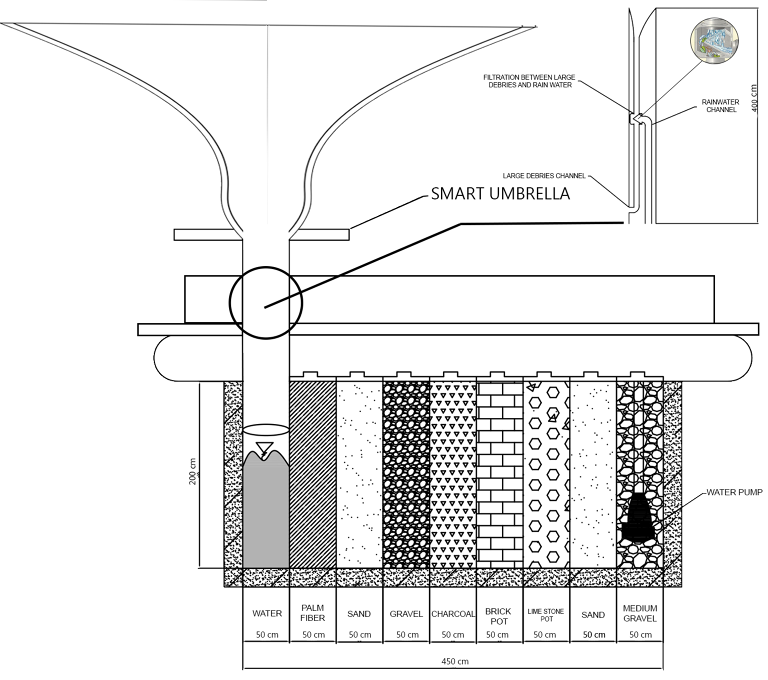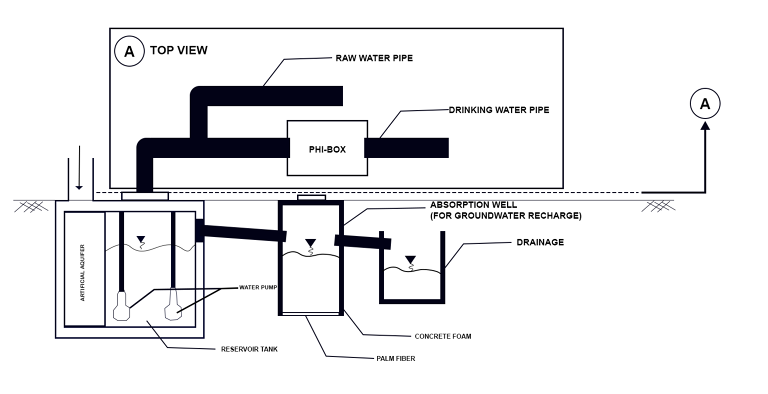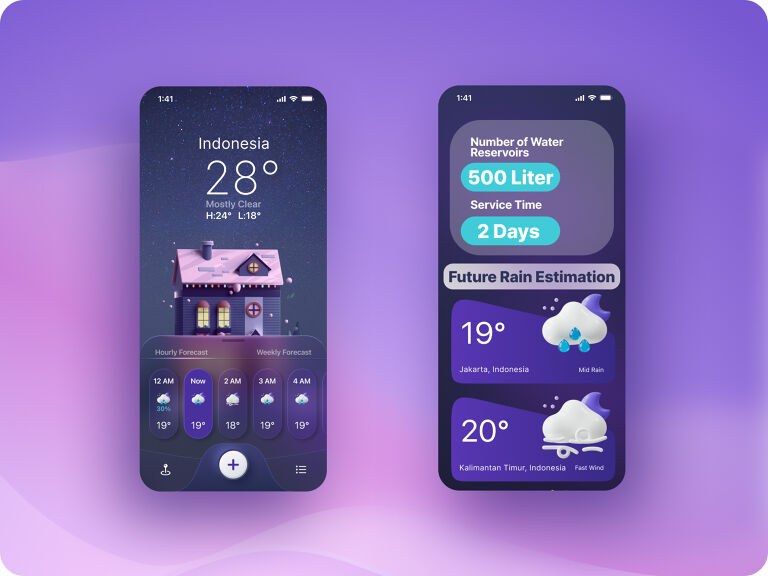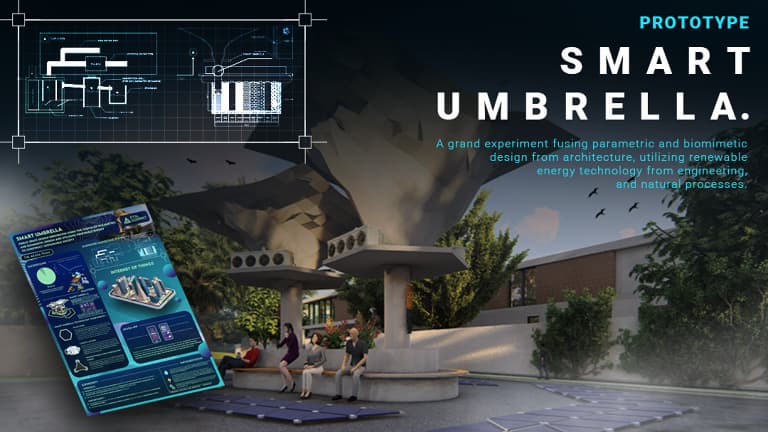Based on the National Agency for Disaster Countermeasure data in 2022 recorded 97.12% of the disasters that happened in Indonesia were caused by hydrometeorological disasters and are predicted to increase in line with the earth's surface temperature fluctuating due to climate change and affecting such as drought, cyclones, forest fires, landslides, and floods.
Flood disasters themselves accounted for 43% of all documented natural disasters, affecting 2.3 billion people, killing 157,000, and causing US$662 billion in damage. In Indonesia, flood is the most frequent disaster.
One of the reasons for the flood disaster was the growth of Indonesia's population which reached 1.13% (Indonesian Statistics Agency, 2022) and caused a land conversion from open land to closed land so the water catchment areas became smaller then caused flooding. In consequence, construction development that prioritizes a sustainable society is needed by implementing renewable energy management.
Energy management is the coordination of planning, development and operation of renewable energy systems to supply the energy needs of society. Proactive and balanced management of the production, conversion, and distribution of energy sources is central to the sustainable development of society since all energy related activities are closely related to natural resources, clean water supply, air quality, and global climate changes.
Sensible energy management considers the effective and reliable operation of the energy system while preserving natural resources, protecting the environment, and observing ethical values. Energy management activities can be performed at various levels including resource management.

Smart umbrela technology
Rainwater harvesting can be implemented with the innovative idea of designing public space in the smart umbrella form using the fusion of parametric and biomimetic design that adapts the calla lily plant concept and several supporting technology components. One of the components is a panel that utilizes piezoelectric energy in which the energy is obtained from mechanical pressure that can generate electricity every time an object passes through the electric floor panel that can be installed parallel.
The smart umbrella also added solar panel technology component that can absorb solar light energy and then convert it into electrical energy using the principle of the photovoltaic effect.
To reduce pollution we add a carbon capture technology component that can be used to capture CO2 directly from the atmosphere and then inject it far into underground and then through geological processes that will turn it to stone in less two years. All of the smart umbrella technology is the concept of renewable energy management that can realize green infrastructure.
Smart umbrella is a sustainable innovation that is also integrated with rainwater treatment with the concept of artificial aquifers for storing rainwater and also support the realization of a sponge city in Nusantara Capital City. In the concept of an artificial aquifer to process rainwater, layered filters will be used to filter rainwater with materials such as palm fiber, sand, gravel, charcoal, bricks, limestone, and technology of UV-filtration and graphene oxide materials filtration.
Then the rainwater that has been harvested and filtered will be stored in a reservoir and can be used for various needs. To ensure the amount of water contained in the water reservoirs from rain harvesting results can supply daily needs, an application that detects the amount of water reservoirs will be used which can be accessed via smartphone and will also be integrated with other smart umbrella components.
Procedure


Rainwater harvesting system procedures:
- The rainwater will be collected in the catchment area (smart umbrella roof) and will flow to the pillar which also functions as a pipe.
- Water from the catchment area will enter into an artificial aquifer building to store rainwater but before the water falls down through the pipe, there is filtering using coarse wire mesh to dislodge leaves or large debris so it doesn't clog the pipe.
- In the artificial aquifer tub, stored rainwater flows to the artificial aquifer filter slowly so that the sewage filtering process takes place perfectly.
- From the first filtration process, the water will go to reservoir tank where the rainwater has become raw water that can be used but isn’t drinkable.
- Phi-box will manage the secondary filtration process using UV-filtration and graphene oxide materials filtration to process partial raw water into drinking water and then can be used by pumping it, then data from system performance is collected through the integration of SCADA and GIS. The general data will be shared in AKASA-App which can access.
- If the rainwater stored in the artificial aquifer is full, then the overflowing rainwater will flow freely into the ground to recharge and repair groundwater or it can also flow to the environmental drainage.
- Water that falls into the yard, will be caught by green open space (plant).

AKASA-App
The application system is used to initiate the use of technology in the form of sensors, data analysis, and artificial intelligence to ensure that the water in the reservoir tank that has been filtered by an artificial aquifer stored in rainwater can supply daily water requirements.
The AKASA-App is an integrated application that provides information in the form of the amount of water storage, weather, predictions of future rains, socialization of the AKASA-App system, feedback from the AKASA-App system users, and other features.
Furthermore, the feature contained in the AKASA-App is that it can collect data on pavement panels based on a piezoelectric energy system from the smart umbrella. This electricity and data generation panel system is equipped with a wireless API (Application Programming Interface) that transmits real-time movement data analytics, rewarding people for their steps by translating them into discounts, vouchers and clean electricity to charge electric vehicles.
This apps integrated with SCADA and GIS systems used for distribution. Through the SCADA dashboard, the distribution team can find out the flow of water supply needed by the community. The advantages of this AKASA-App are that it is easy to access anywhere and easy to download and operate.
More than 9000 liters of water filtered by artificial aquifers stored in reservoir tanks
Technology from the smart umbrella can be implemented on Sumbu Kebangsaan IKN - Plaza Seremoni, Sipil, and Bhinneka or other open spaces in IKN that can be useful for daily activities and helping to realize a smart city such as realizing green transportation through charging stations for electric vehicles and clean water supply for sustainable society. If full ± 9000 liters of water that has been filtered by artificial aquifers stored in reservoir tanks can be used for various needs, such as drinking fountains, hydrants, watering trees, groundwater recharge when it reaches the limit and other features.
Implementation of carbon capture becomes climate change mitigating technology by reducing carbon emissions in the city. Implementation of piezoelectric energy in the form of pavement panel technology has a positive impact on the environment when collaborated with solar panels can be an eco-friendly alternative power plant that can be used as a sizable additional energy source of around ± 200-500 Wh/solar panel and the pavement panel can turn on LED lights for 6+ hours if used properly and efficiently, thus supporting the reduction of greenhouse gas levels obtained from non-renewable power plants. Utilization of recycled polymer waste as pavement panel material can reduce waste.
0 Komentar
Artikel Terkait



